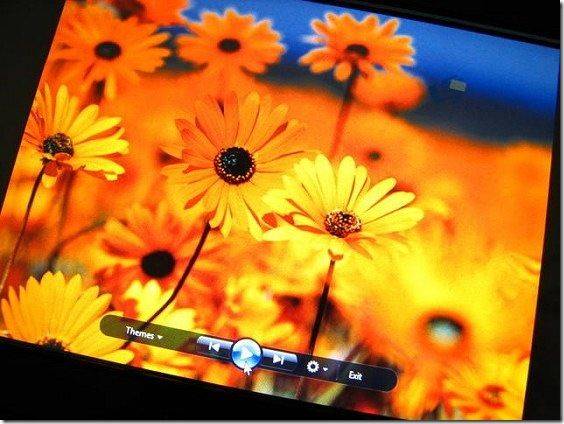Screen

Screen sizes range from about 4 inches to 10″ and resolutions vary wildly from the small 480×320 of the iPod touch to 1280×768 and beyond. Perhaps a more useful figure to use is the PPI. (Pixels per Inch, also known as DPI – Dots per inch) For example, a 1024×600 resolution on a 4.8″ screen results in a DPI of around 250. Given standard font sizes on Windows operating systems, this can be extremely hard to read and only really possible when holding the device at about 15-20cm from the eyes. At the other end of the scale, 10″ devices with the same resolution result in a comfortable tablet-top readable figure of 120. Here are some tips for choosing screen sizes.
- For tabletop operation, 1024×600 at 9 or 10″ is generally acceptable without any adjustment of font sizes. a 7″ device at 1024×600 will require some adjustment of font sizes (to about 125%) for it to be comfortable.
- For handheld use, a 5.6 or 7″ device at 1024×600 provides acceptable reading quality.
- For touchscreen devices, a PPI of 150 or less can help with accessing standard font-size links and menu items with a finger.
- A device or application with a fast zoom can help in many scenarios.
- In most operating systems, the font size can be adjusted up to make typing and reading more comfortable but this reduces the amount of useable space on the screen.
- The design of 7″ screen devices can be too small to fit in a high quality touch-typing keyboard.
…and here are some comments based on screen sizes:
- 4.8″ Smallest for comfortable 800×480 hand-held work. Poor typing speed on most keyboards at this size but comfortable thumbing experience on sliders. Ideal for pocketable MIDs.
- 5.6″ Good handheld size for 1024×600 screen. Also works as an emergency table-top device. Thumbing still comfortable in most cases.
- 7″ Still small enough for handheld use but also useable for up to an hour on a tabletop. A tablet device allows you to go handheld when needed and then add a BT or USB keyboard for more comfort on the table. Probably the size limit for extended one-handed use with a touch-screen until components shrink to allow bigger screens for the same, circa 700gm, weight.
- 8.9″ Starting to get comfortable on a table for extended periods. 1hr + is easy. At this size, weights are usually about 1KG which makes single handed use or even /two-handed use difficult over longer periods.
- 10″ Very comfortable tabletop experience. Arguably the best size for travel and productivity work on a tabletop. 1.3-1.5KG is common though so its not a device you’ll be using in one or two hands which severely limits usage in some scenarios.
- Adjustable screens and foldable screens have been seen in a few designs but are not expected to be mainstream with fast refresh, colour and touch for another 3 years or more.
PPI figures can be found on the comparison pages of the product portal for nearly all devices. E.g. This comparison page here.
Screen brightness is another area to consider. The best screens now (and this is common on nearly all devices now) are using LED backlighting and offer a brightness of around 300 nits which is useable in a brightly lit room or bright bur shaded outdoor area. Some points to note here:
- Glossy screens may give too many reflections for outdoor use but are generally sharper and offer better contrast for use indoors.
- Touchscreen layers can significantly reduce the brightness of a screen.
- Older CCFL-backlit screens are to be avoided for mobile use as they are less-bright and consume significantly more battery than LED backlit screens.
- There are some specialist screens that use filters and transflective layers to improve the outdoor viewing experience.
- The higher the brightness, the more battery drain (usually about 10-15% less battery life on high screen brightness.)
- The bigger the screen, the higher the battery drain.
Touch and Pen input.
For those interested in using finger or stylus to drive an Ultra Mobile PC, consideration should be given to the varying types of touchscreen available.
The most commonly found tech technology is ‘resistive digitiser’ touch which uses a two-layer sensor mounted over the screen. Its cheap and easy to deploy but has disadvantages for those wishing to do natural input work as anything touching the screen, from stylus to finger to palm, will be registered. Handwriting input is possible but requires the user to adopt a palm-lifted approach to handwriting which isnt at all natural. Attempts are made to reduce this effect by making the touch layer less flexible and thus requiring a heavier per-mm press. This can work well in some cases if implemented well. Its known as ‘heavy’ touch. The weight needed to register on a touchscreen is often quoted in gm/mm2 where 80 would be a light touch (good for finger) and 120 would be a heavy (good for stylus) figure.
Active digitisers don’t register physical touch. They register the proximity of a special pen which must always be used on the device. These devices can support proximity sensitivity and work extremely well for those wishing to use natural handwriting on operating systems like XP (Tablet Edition) or certain versions of Vista.
Capacitive touchscreens are an alternative to light touch resistive digitisers and work extremely well in detecting finger contact without requiring a lot of pressure.
Multi-touch screens are a relatively new possibility and use the capacative method to register multiple touch points on a screen. Software can then convert this touches and movements into events such as scrolling, zooming and page-related events.
If you are looking to use natural handwriting input, our recommendation is to look for the active digitisers or for the heavy touch resistive digitisers that are often referred to as having ‘palm rejection’ capabilities.










